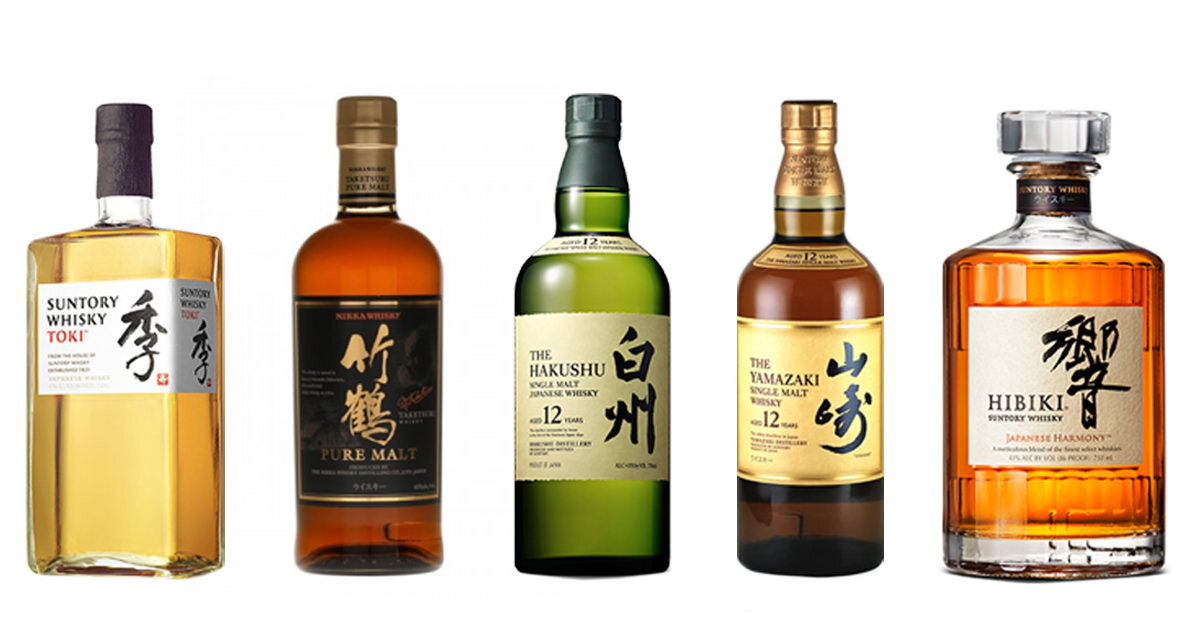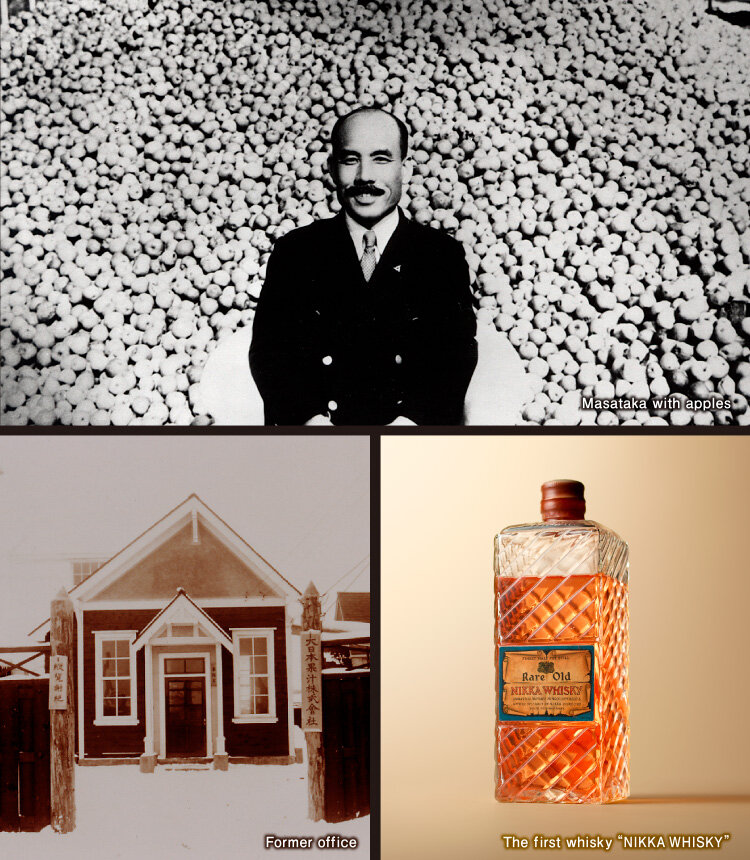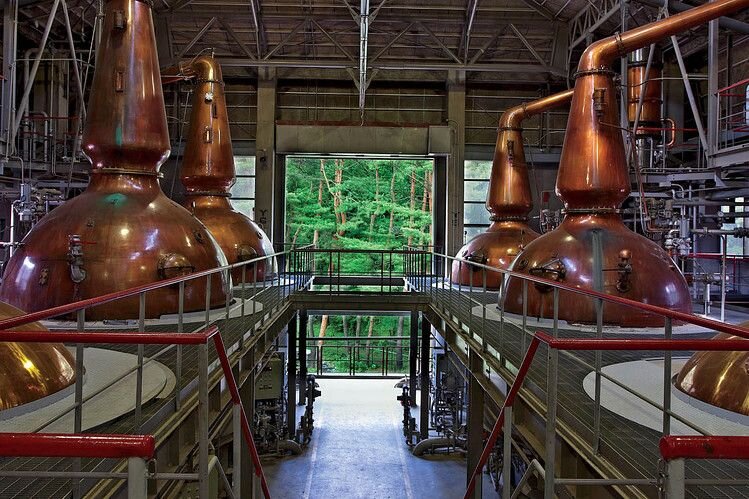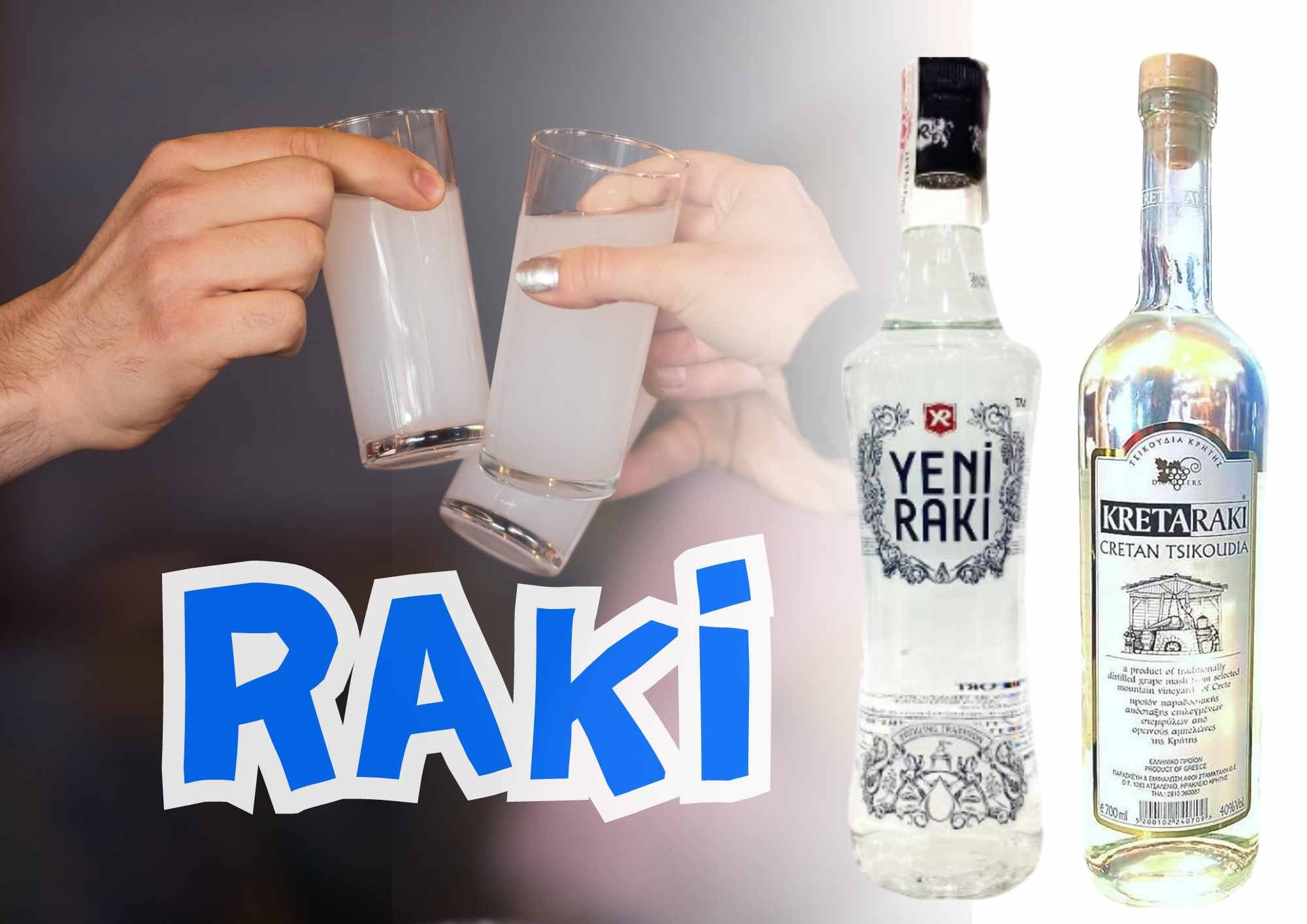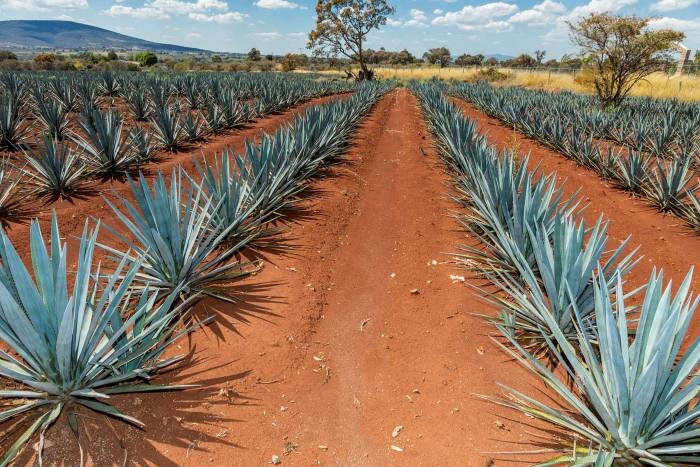Japanese whisky: Complete beginners guide
Japanese whisky has easily become the largest growing whisky category in the world. 5 years ago words like Hibiki, Suntory, Yamazaki and Nikka were just gobbledygook. Now, every man and his dog has an opinion on Japanese whisky. Whether they hate it or love, which brands you should be drinking and which you shouldn’t be.
It can be confusing to know where to stand with it all. What's good? What isn't? Prices have skyrocketed due to the popularity and discontinuation of these whiskies. About, 4 years ago I was working with a company opening a Japanese cocktail bar in Manchester. So I’ve seen first hand how popular Japanese whisky has become, and how prices have tripled.
Prices and popularity aside, I really do love Japanese whisky. Not only is it great tasting whisky, but the story of Japanese whisky is really interesting. It’s a romance between a Japanese man and a Scottish woman. A partnership between that man and a Japanese businessman and finally a rivalry between the two.
What will be covered in this article?
During the below we will cover an array of things. To jump ahead to a certain part of this guide, click the sections below.
Brief History of Japanese whisky
When it comes to Spirits. It can be very difficult to trace their origins. People have been making these Spirits for thousands of years. Some since what seems like the beginning of time. So, timelines and origins can be quite mysterious and hard to nail down. Luckily for us. Japanese whisky is a category within spirits that we can trace. Because in terms of booze. It hasn’t been around for that long.
The entire Japanese whisky industry can be traced back to one man – Masataka Taketsuru. In 1918 Taketsuru went to Scotland to study chemistry and learn the secrets of Scottish whisky making.
In 1923 he partnered up with another Japanese man and whisky enthusiast, Shinjiro Torii. Together the two opened what is now the largest distillery in Japan and has undoubtedly shaped the current Japanese whisky style, which shares many similarities with scotch. That distillery is Suntory. Taken from Shinjiro Torii’s name. Due to the Heavy Influence Scotch whisky has on Japanese whisky, the production process is the same as Scotch. Examples of Japanese Whiskies are Yamazaki, Nikka, Hibiki, Hakushu and Suntory.
Due to the climate of Japan being vastly different to Scotland, the Japanese believe that the 4 definitive seasons that they have, helps them to get a more balanced whiskey in both mouth feel and taste. the ageing process of it however, is slightly different. As some Japanese whisky companies (Suntory) are known for using Japanese oak that gives a more oriental flavour (spices and floral)
When categorising Japanese whisky, like Scotch whisky, they have the separate categories of the production style as well.
Left - Shinjiru Torii | Right - Masataka Taketsuru
The fathers of Japanese whisky
Japanese whisky, revolves around two companies, led by two men. In 1923, a man named Shinjiro Torii founded Japan’s first commercial malt whisky distillery, Yamazaki. Torii’s company, Kotobukiya (known today as Suntory) offered a large range of products, from port wine to toothpaste, but most of these products were simply a way to generate the revenue needed to fund Torii’s real dream - To create a true Japanese whisky
Above - Shinjiro Torii
To achieve this, Torii hired a man named Masataka Taketsuru. Masataka Taketsura was originally a pharmaceutical wholesaler who had spent years studying the intricate practices of whisky production in Scotland. Masataka had fallen in love during his time in Scotland and married a Scottish woman named Jessie Roberta "Rita" Cowan.
They moved back to Japan to follow Masatakas dream of creating Japan's first true whisky. Upon returning, Masataka Taketsuru struggled to achieve this until meeting with Shinjiro Torii. The two became partners.
Above - Masataka and his wife Rita
Taketsuru was given the responsibility of all whisky production at the Yamazaki distillery, however, the visions of the two men were quite different. Taketsuru wanted to create intense, powerful whisky, similar to the great expressions created in Scotland. Therefore, he wanted to move the distillery to the north regions of Japan where the climate was most similar to Scotland.
Torii, on the other hand, wanted a smoother, more elegant product, to cater to the Japanese palate, which wasn’t used to such strong flavours. He wanted the distillery to be closer to Kyoto and Osaka where the importing and exporting ships were. Torii was very much a businessman at heart.
Taketsuru honoured his contract and left Kotobukiya after 10 years. In 1934 Taketsuru went north and built his first distillery in Yoichi, Hokkaido, a place - though inconveniently located - he had always considered to be the ideal site for him to make whisky. The environmental conditions of Yoichi were in many ways similar to those of Scotland with a cool climate, crisp air and appropriate humidity.
The company first started producing apple products under the name of “Dai Nippon Kaju”, meaning the “Great Japanese Juice Company” while he was preparing to produce whisky. In 1936 the first pot still designed by Masataka and made in Japan was installed and started distillation. Finally in 1940 the first whisky from Nikka was launched. The brand name of this whisky was “NIKKA WHISKY”, short for "Nippon Kaju", which later became the name of the company itself. the second largest whisky producer in Japan today.
Above - Masataka photos from https://www.nikka.com/eng/story/founder/
A fierce rivalry ensued over the years between Suntory and Nikka which continues to this very day. When one company launches a new product, the other isn’t far behind with a product of its own.
How Japanese whisky is made
Japanese whisky is made very similar to scotch whisky. You could say that Japanese whisky is technically Scottish but traditionally Japanese. So it relies heavily on malted barley in its production.
The malted barley is then mashed and distilled twice in pot stills. Like Scotch whisky, Japanese whisky is aged in wood barrels. That can be American oak, sherry casks or sometimes, Japanese Mizunara oak. The ageing process is what imparts unique characteristics into the whisky. All them spicy, sweet, and woody notes come from the ageing process.
For blending whiskies, Japanese distillers have to be a lot more innovative then Scottish Whiskies. When it comes to Scotch, distillers will share or buy whisky from one another to blend. There is no sharing between Japanese whisky. Meaning each company will likely own a few distilleries spread over different micro-climates from all over Japan. So they can blend their whiskies together.
Because of this. Japanese whisky can be hard to pin down to a type or style. Although they follow the same traditions as Scotch whisky. A lot of the blending and flavour is unique to the distillery which makes it. It is why prices are generally high.
Above - Copper pot stills
What Makes Japanese Whisky Different from Scotch
So, with Japanese whisky taking a lot of inspiration from scotch whisky. You may be wondering what exactly are the differences between the two. Below are a few of the differences that make Japanese whisky and Scottish whisky different. Other than the obvious, that being where they are made
Japanese whiskies are less peated. Peat is widely used in Scottish whisky to dry out the barley in the malting process. It’s what gives Scottish whisky its noticeable smoky aroma and taste.
Don’t get me wrong, Japanese whisky distilleries still use peated barley. However, they use much less of it. Although a lot of Japanese whisky is very peaty in flavour. We must recognise that there is a huge majority of Japanese whisky that isn't.
Location. Even though it isn’t the only difference between the two whiskies. It's still worth mentioning the obvious. They are made in different parts of the world. Scotch is made in Scotland and Japanese whisky is made in japan.
The reason this affects the end products is the impact a location has on whisky production. You have to consider elements such as weather. Weather has a huge impact on the ageing process of whisky and although a lot of Japanese distillers are in locations that mirror the climate of Scotland. A lot do not, which can hugely impact the end flavour ageing has on the whisky.
The filtration. There are a lot of ways to filter whisky. From absorption filtering to charcoal filtering. Some Japanese distilleries use a technique of bamboo filtering.
A new generation of distilleries
Although Japanese whisky began with Suntory and Nikka. Today there is a new generation of japanese distilleries. Giving its increase in popularity and massive demands for it. Japan has slowly seen more distillers opening over the past 5 years.
As of today there are 11 main distillers which are pictured below.
Photo from http://whiskeymuse.com/japanese-whisky-101/
Japanese whisky timeline
1870s
Shinjiro Torii, a pharmaceutical wholesaler, was inspired by the flavor of western liquors.
1899
He began selling imported wines out of Torii Shoten in Osaka, and by 1907 he made port wine with which he found some monetary success. He remained unsatisfied with just port wine, and so he turned his sights on the creation of a domestic variant of Scotch.
1918
Masataka Taketsuru, travelled from Japan to Scotland to study English and Organic Chemistry at the University of Glasgow. After finishing school, Taketsuru worked in several Scottish distilleries.
He began working in Speyside, a small region that encapsulates half of Scotland’s distilleries and offers a spectrum of whiskies. He then worked in West Lothian, known for its few distilleries and light fruity single malts. He moved a third time to Campbeltown, a coastal town that makes briny, peaty whisky. Over the years Taketsuru took detailed notes of the distilling process.
1923
Torii founded whisky producing company Kotobukiya and opened Japan’s first distillery Yamazaki.
1924
Masataka brought his knowledge to Torii’s Yamazaki distillery where the two worked together to produce Japan’s first commercial whisky, Suntory Whisky Shirofuda. Suntory is today the third largest distillery in the world.
1934
Masataka Taketsuru decided to leave Suntory to start his own distillery in Yoichi, Hokkaido. Originally called Dai Nippon Kaju, the company would later be known as Nikka Whisky Distilling Co., the second most successful distillery in Japan.
1970s
The Japanese industry really boomed when sales of imported whisky were increasing massively. Numerous new distilleries were built and some sake distilleries and companies were also converted to making whisky, in order to meet demand.
1980s
The whisky industry in Japan was struggling and a number of distilleries were closed. The main contributing factors blamed for the slump were the increasing cheapness and availability of imported whiskies from Scotland, Ireland and the USA combined with a hike in the Japanese alcohol taxes. This made the Japanese whiskies very expensive in comparison to overseas competitors and sales crashed.
2000s
In the year 2000 the market for Japanese whiskies was almost entirely domestic, though this changed in 2001 when Nikka's 10-year Yoichi single malt won "Best of the Best" at Whisky Magazine's awards.
2010s
A number of blind tastings have been organised by the whisky magazine which have included Japanese single malts in the lineup. On more than one occasion, the results have had Japanese single malts (particularly those of Nikka's Yoichi and Suntory's Yamazaki) scoring higher than their Scottish counterparts.
In August 2018, the 50-year-old Yamazaki first edition went for record $343,000 at Taipei auction in Hong Kong.
The Akadama Nude Poster (created in 1922)
This was the first nude poster in Japan. The model was Emiko Matsushima, the prima donna of the Akadama Opera Company, a troupe organised to advertise Akadama Port Wine. In that era, pictures showing bare shoulders were not permitted in public. Akadama port wine, is a Japanese sweet red wine created in 1907 by Shinjiro Torii, the founder of Suntory before his whisky journey.
Japanese whiskies to try
When you consider just how popular Japanese whisky has become, and how long it takes to age. Coming across a recommended brand can be difficult. Japanese whiskies that were easy to find 2 years ago are now rare. £50 bottles have gone upwards of £100. It can be difficult hunting for specific brands especially if you’re looking for a certain age statement.
Take Yamazaki 12 for example. It used to be around 40-60 pound for a bottle. It’s a very nice whisky, so that was a very fair price. Today however, i can't find a bottle for less than £120. Supply and demand at its finest. There is a serious shortage of these whiskies. Just take a look at the Japanese whisky category on Master of malt. 80% of them seem to be discontinued.
However, that being said, there still are lots of Japanese whisky to add to your whisk(e)y tasting bucket lists. Whisky that you can still get hold of for a fair price. No age, blended Japanese whisky is a good way to start your Japanese whisky journey. The prices will be a lot fairer. Meaning if you like them you can then seek to treating yourself to a more expensive rare age statement bottle.
So, which Japanese whiskies do I recommend? I’m glad you asked. Below are some of my must try recommendations for Japanese whisky.
Nikka from the barrel
Award-winning Nikka Whisky. Bottled at 51.4% ABV. The blend combines both single malt and grain whiskies from the Miyagikyo and Yoichi distilleries, which are then married in a huge variety of casks, including bourbon barrels, sherry butts and refill hogsheads.
Great for: Drinking neat
Nikka coffey grain
Nothing to do with “coffee”. It gets its name from the coffey stills used to distil the whisky. It uses the two Coffey stills at the Miyagikyo distillery, which were imported from Scotland to Japan in 1963. Fun fact. This is my favourite whisky. Not just my favourite Japanese whisky. But my favourite whisky period. I can't recommend it enough.
Great for: Anything. Cocktails, highballs, lowballs, served over ice, served neat. Super versatile whisky.
Hibiki Harmony
Hibiki Japanese Harmony is made with malt whiskies from the Yamazaki and Hakushu distilleries, as well as grain whisky from the Chita distillery. The whiskies are drawn from 5 different types of cask, including American white oak casks, Sherry casks and Mizunara oak casks. The blend itself was crafted by the Suntory Whisky blending team, led by Master Blender Shingo Torii. Also, it’s a beautifully designed bottle.
Great for: Drinking neat.
Mars Kasei
I’ve had plenty of experience with this one. In a cocktail bar where I used to work, I would have this on my back bar and use it for all my Japanese whisky based cocktails. It's from the Mars Shinshu distillery. It is Japan's highest whisky distillery at just under 800 metres, 'Kasei' is the Japanese word for Mars.
Great for: Cocktails of all types.
Yamazaki distillers reserve
Released in Spring 2014, Yamazaki distillers reserve is a range from the Suntory distillery. The whisky matured in Bordeaux wine casks and Sherry casks. So think about those typical bordeaux wine notes. Dark berries and spice.
Great for: Enjoying straight or over a few cubes of ice.
Suntory Toki
“Toki” Means time in Japanese. A blended whisky from Suntory's three distilleries: Yamazaki, Hakushu and Chita.
Great for: Mixing in cocktails. Especially highballs. Try with a top of coconut water, sparkling water or ginger ale.
There we have it. Your complete 101 guide to Japanese whisky.
If you’ve enjoyed this guide please leave a comment below or use the below buttons to share. Thank you

